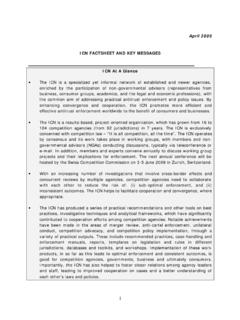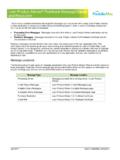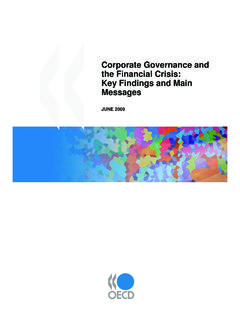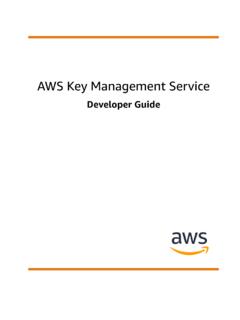Transcription of Key Children's Safety Messages - Child Safety Aust
1 Key children s Safety Messages The four key children s Safety Messages outlined in this document form the foundation of the Safe Start: Protective Behaviours for children program. For further information please contact children s Safety Australia via tel: (07) 3379 4475 (International 61 7 3379 4475) or email: 1. I am special, so are you! Aim: To build a healthy self esteem and encourage respect and empathy for others. The link between self esteem and mental, physical and emotional wellbeing has long been recognised. In relation to sexual abuse, children with a high self esteem are less likely to be targeted by offenders, are more likely to stop the abuse and are more likely to disclose abuse.
2 A) Appreciating individuality: children should be encouraged to appreciate and take pride in their individuality including their appearance, cultural and family background, gender, talents and abilities, likes and dislikes. It is also important for children to appreciate the individuality of others and to recognise that being different is what makes us special. As concerned adults we can assist in boosting children s self esteem by appreciating their individuality, praising them for what they do well, constructively correcting them when needed and encouraging them when they lack confidence undertaking a particular task.
3 B) Expect Respect: People treat us how we allow them to. Teaching children to expect respect from themselves and others is an important step to building a healthy self esteem. We can do this by assisting children to set boundaries of unacceptable behaviour from others. Discuss steps children could take if people cross the line of acceptable behaviour. We must also teach children the importance of showing others respect and how they can do this. Consider setting rules of acceptable behaviour at home or in the classroom to ensure boundaries are readily identified and agreed consequences are consistently enforced when a rule is broken.
4 For best results, develop rules and consequences in consultation with children . c) Expressing ourselves assertively: Encourage children to take ownership of their feelings and to express themselves in a way that demonstrates self respect as well as result for others. Assertive communication is a skill that does not come naturally for most people and needs to be practised regularly. We can develop assertiveness skills by: understanding different communication styles (passive, aggressive, passive aggressive and assertive); acknowledging the benefits of assertive communication; and practising to communicate assertively.
5 D) Building Resilience: We can help to build children s resilience by encouraging them to develop: a habit of positive thinking; an optimistic outlook on life; and a problem-solving response to challenging situations. Rather than rescuing children or telling them what to do, adults are encouraged to discuss options and to provide support. Other Self Esteem Building Strategies: Say I Love You Develop and maintain special daily rituals Let your children help you Take an interest in their sports or hobbies Eat meals as a family Seek out one-on-one opportunities often Praise desirable behaviour (praise should be genuine and specific) Correct firmly but lovingly Respect their choices Make your Child / children a priority in your life 2.
6 Safety is my right Aim: To identify and effectively respond to potential unsafe situations. a) Right to Safety : We all have the right to be safe with people. It is important for children to be aware of this right and understand if they do not feel safe that they can do something about it. b) Corresponding responsibilities: Having the right to be safe with people means children have a responsibility to maintain their own Safety and to take action if their Safety is threatened, such as going to a safe place and telling an adult they trust*. They also have a responsibility to respect others right to Safety .
7 Parents and teachers may discuss how children can respect others right to Safety , for example by treating others with respect and by assisting people in need of help. *Note: This responsibility does not remove the responsibility of protective adults to keep children safe. c) Preventative Safety measures: The Safety Messages contained in this handout do not seek to impose unnecessary restrictions on children s lives or in any way diminish their spirit of fun and adventure. children are instead encouraged to think about how they can maintain their Safety while doing the things they enjoy, accepting that there will be a degree of risk involved.
8 In almost every situation we can reduce identified risks by putting in place simple Safety measures. Safety measures can be specific to an activity, for example wearing a helmet and appropriate footwear when riding a bike. Other Safety measures are more general, such as making sure a parent is aware of children s whereabouts, who they are with and when they are expected home. Parents and teachers are encouraged to assist children to identify risks in the activities they enjoy and to implement Safety measures to reduce them. For example ask, How could we keep ourselves (doing a particular activity)? . d) Early warning signs Early warning signs are our body s way of telling us we don t feel safe.
9 They include butterflies in the tummy, sweaty palms, a pounding heart, crying, wobbly knees, wanting to be sick, and so on. We can experience early warning signs in three situations: 1. When it is fun to feel scared, watching a scary movie or going on a fast ride. 2. When it is not fun, but our choice and we are in control, delivering a class presentation, going to the dentist, or getting a needle from the doctor. 3. When it is not fun, there is no choice or control. This is a personal emergency. Personal emergencies may include being bullied, lost or abused. It is important for children to recognise when their body is telling them they do not feel safe through their early warning signs and to determine if they are experiencing a personal emergency.
10 Note: It is important to note there may be situations where children experience personal emergencies, but do not feel early warning signs. An example is children who have been sexually abused from an early age and who identify the abuse as normal behaviour. The grooming process used by offenders often involves building a trusting relationship with the Child . children may not experience early warning signs when they trust and feel safe with the offender, as they are often ignorant to the fact the offender s behaviour is inappropriate and abusive. While this issue is acknowledged, an awareness of other Safety concepts included in this handout will assist children who may fall into this category, in particular educating them about body ownership and the rules about touching.








